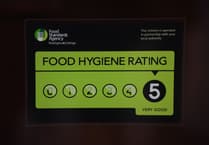Given their Latin origins and often misleading spellings, the correct pronunciation of plant names can be challenging for many individuals.
With this in mind, the online language learning platform Preply has created the ultimate flower pronunciation guide to help budding florists and gardeners, just in time for summer.
Preply gathered and analysed Google Search data for 250 of the most popular flowers and houseplants to reveal which are the most troublesome to pronounce. Native language experts then investigated the linguistic background of the most mispronounced flowers, shedding some light on exactly how to pronounce them correctly.
Preply’s research reveals Peony is the most commonly mispronounced flower, with an average of 260,640 people searching for pronunciation guidance each year. Also known as a traditional floral symbol of China, peonies can leave many tongue-tied; fortunately, Preply has revealed the correct way to say it is “PEE-uh-nee”.
In second place is Orchid, whose pronunciation is searched by 242,040 people annually. Orchids are plants that belong to the family Orchidaceae and are correctly pronounced “aw-kuhd”.
Rounding up the top three is Hyacinth with 203,520 annual searches. This fragrant, spring-blooming perennial is correctly pronounced “hy-uh-sinth”.
Other commonly mispronounced flowers include: Hibiscus [huh-bis-kuhs], Hydrangea [hai-drayn-juh], Iris [ai-ruhs] and Daffodil [da-fuh-dl].
How to say it:
1. Peony —PEE-uh-nee
2. Orchid — aw-kuhd
3. Hyacinth — hy-uh-sinth
4. Chrysanthemum — kruh-san-thuh-muhm
5. Dandelion — dan-duh-lai-uhn
6. Hibiscus — huh-bis-kuhs
7. Lilac — lai-luhk
8. Basil — BAZ-uhl
9. Dahlia — day-lee-uh
10. Poinsettia — poyn-seh-tee-uh
11. Hydrangea —hai-drayn-juh
12. Bergamot — buh-guh-mot
13. Cactus — kak-tuhs
14. Tulip — choo-luhp
15. Rose — ROHZ
16. Iris — ai-ruhs
17. Rhododendron — roh-duh-DEN-drun
18. Daffodil — da-fuh-dl
19. Violet — vai-uh-luht
20. Daisy — day-zee
According to Preply’s research, these are the top 20 flowers and houseplants that people most commonly mispronounce around the world.
Sylvia Johnson, head of methodology at Preply commented: “Botanical Latin, despite being primarily a written language, often presents challenges when it comes to pronunciation due to the occurrence of plant names in speech.
“This leads to confusion as different sources and individuals offer conflicting pronunciations for names like Agastache and Fuchsia, highlighting the lack of consensus in this regard.
“Furthermore, common names add another layer of complexity as they can vary widely from region to region and are often applied to more than one plant species.
“As a result, navigating the realm of plant nomenclature requires careful consideration and a focus on understanding the scientific names associated with each plant, ensuring clarity and avoiding misunderstandings.”





Comments
This article has no comments yet. Be the first to leave a comment.